Special Report
The Most Stressed Out City in Every State

Published:
Last Updated:

Money is the single largest cause of stress in the United States, the richest country in the world. And while the economy is still recovering from the Great Recession, with aggregate income on the rise, many Americans face increasing debt burdens, stagnant wages, and rising poverty levels.
According to the American Psychological Association (APA), stress levels of Americans are trending downward. However, just as income gaps have been growing, so has the gap between people who seem to manage stress well and those who do not.
In its latest annual review of stress in America, the APA identifies money and work as the two largest sources of stress of Americans, followed by the economy, family responsibilities, and personal health concerns. 24/7 Wall St. reviewed a range of data in these categories in order to measure the likelihood of living in stress in each state’s urban areas.
Click here to see the most stressed out city in every state.
The variation in stress levels do not vary much across the U.S. According to Lynn Bufka, psychologist at the APA, this could be due to the relatively high level and overall prevalence of stress. “People are going to experience stress no matter what,” she said
The underlying causes of stress do vary considerably between regions, however. The lack of variation of reported stress levels across the nation could therefore be due to the variety of coping strategies for dealing with stress, as well as the differences in how stress affects different demographics. Bufka added that for many people, a certain level of stress can actually be necessary to follow through on stated intentions and accomplish work.
Yet, there are healthy and unhealthy ways to manage stress. The APA has found that poor individuals are more likely to engage in unhealthy behaviors to manage their stress. Nearly three-quarters of Americans surveyed report feeling stressed about money at least sometimes, and nearly one-quarter report money concerns as causing stress on a regular basis.
Metropolitan areas are often some of the most expensive places to live in a state, and the most stressed areas tend to be less affordable. The affordability ratio calculates how much homeowners spend on their homes as a share of their total income — the higher the ratio, the less affordable the area. In all but four metro areas on this list, the affordability ratio is higher than the statewide ratio. Also, poverty in these areas is higher than it is in urban areas nationwide.
Americans tend to work longer hours than residents of other countries and the United States is the only developed country where paid time off is not guaranteed. Perhaps it is no surprise that work is the next most common source of stress after finances. Bufka explained that “cognitive ability to process new and challenging situations and analyze them realistically” are closely tied with stress levels. The resources and time available to accomplish something within a work group also dictate stress levels, Bufka added.
The typical American works approximately 35 hours per week. In the most stressed out cities in 34 states, the average weekly hours spent at work exceeds this amount.
High stress levels have tangible health consequences. First, unhealthy reactions to stress such as overeating can result in higher obesity rates, and in turn, worse health outcomes. In 29 of the 50 stressed out cities on this list, obesity rates are higher than the respective state figures.
A growing body of research is also connecting stress directly with premature death, depression, and lower productivity in the workplace. “Feeling stressed and overwhelmed diminishes our mental resources, diminishes our capacity to be flexible mentally, diminishes our ability to sort of generate new ideas, all of which we might need to think about how to manage our sources of stress,” Bufka said.
To identify the most stressed city in every state, 24/7 Wall St. created an index of data measuring the two most common sources of stress — money and work — in each state’s metropolitan areas. To capture money-related stress inputs we reviewed poverty rates, housing affordability, and food insecurity. For work-related stress inputs we included average weekly work hours, average daily commute times in hours, and annual unemployment rates. With the exception of food insecurity and unemployment rates, which came from the United States Department of Agriculture (USDA) and the Bureau of Labor Statistics (BLS), respectively, all data used in the index came from the U.S. Census Bureau’s 2014 American Community Survey (ACS). The incidence of violent crime in each area comes from the Federal Bureau of Investigation’s 2014 Uniform Crime Report. All data are for the most recent periods available. While the potential consequences of stress were not considered in our index, they were reviewed in each state’s MSAs.
These are each state’s most stressed-out city.


1. Alabama
> Most stressed city: Decatur
> Total population: 153,084
> Poverty rate: 14.1%
> Avg. weekly hours worked: 37.2
> Unemployment rate: 6.9%
> Violent crime rate: 166.9 per 100,000 people
> Pct. of adults in fair/poor health: 17.3%

2. Alaska
> Most stressed city: Fairbanks
> Total population: 99,357
> Poverty rate: 9.9%
> Avg. weekly hours worked: 35.9
> Unemployment rate: 5.7%
> Violent crime rate: 648.2 per 100,000 people
> Pct. of adults in fair/poor health: 11.0%

3. Arizona
> Most stressed city: Yuma
> Total population: 203,247
> Poverty rate: 22.4%
> Avg. weekly hours worked: 36.4
> Unemployment rate: 23.3%
> Violent crime rate: 372.3 per 100,000 people
> Pct. of adults in fair/poor health: 22.6%

4. Arkansas
> Most stressed city: Little Rock-North Little Rock-Conway
> Total population: 727,777
> Poverty rate: 14.0%
> Avg. weekly hours worked: 35.3
> Unemployment rate: 5.5%
> Violent crime rate: 696.4 per 100,000 people
> Pct. of adults in fair/poor health: 16.4%
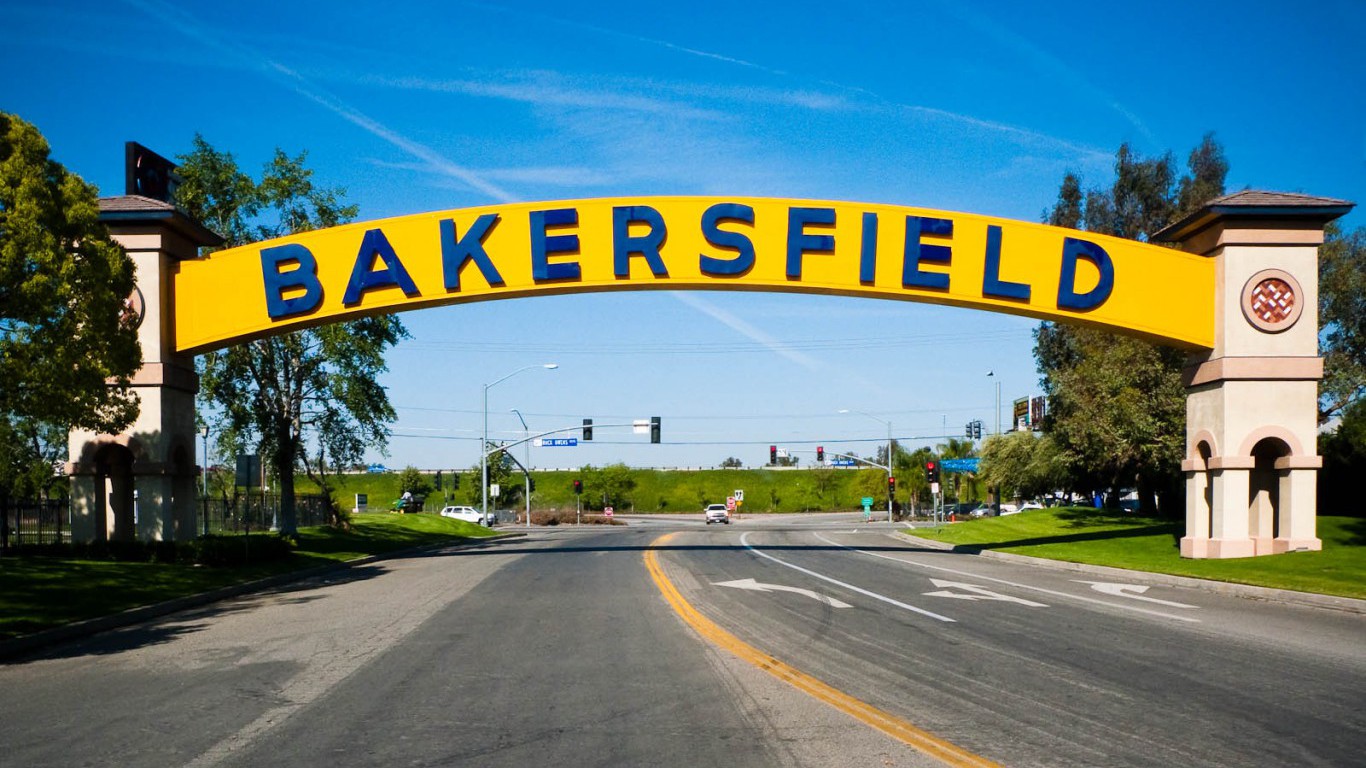
5. California
> Most stressed city: Bakersfield
> Total population: 874,589
> Poverty rate: 24.8%
> Avg. weekly hours worked: 36.5
> Unemployment rate: 10.4%
> Violent crime rate: 510.5 per 100,000 people
> Pct. of adults in fair/poor health: 23.7%
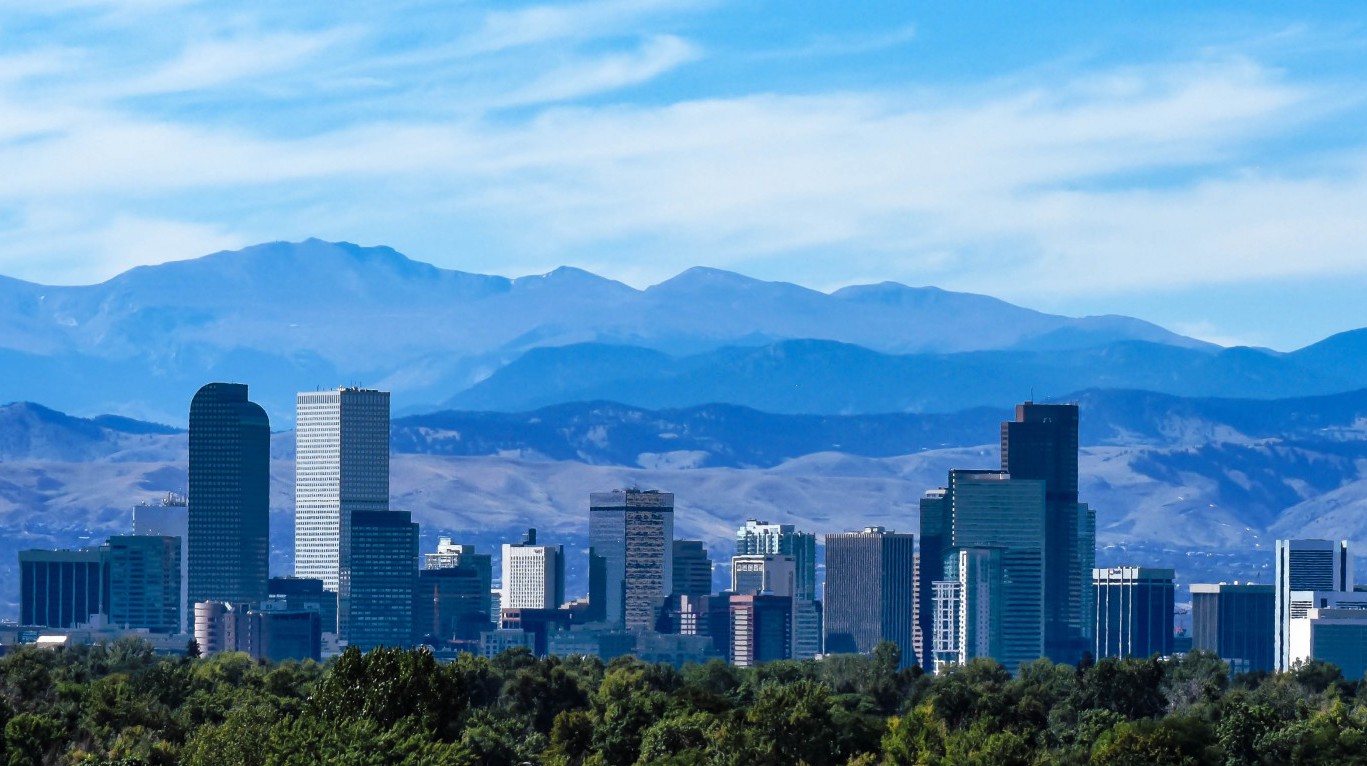
6. Colorado
> Most stressed city: Denver-Aurora-Lakewood
> Total population: 2,754,258
> Poverty rate: 10.8%
> Avg. weekly hours worked: 35.1
> Unemployment rate: 4.8%
> Violent crime rate: 331.2 per 100,000 people
> Pct. of adults in fair/poor health: 12.2%
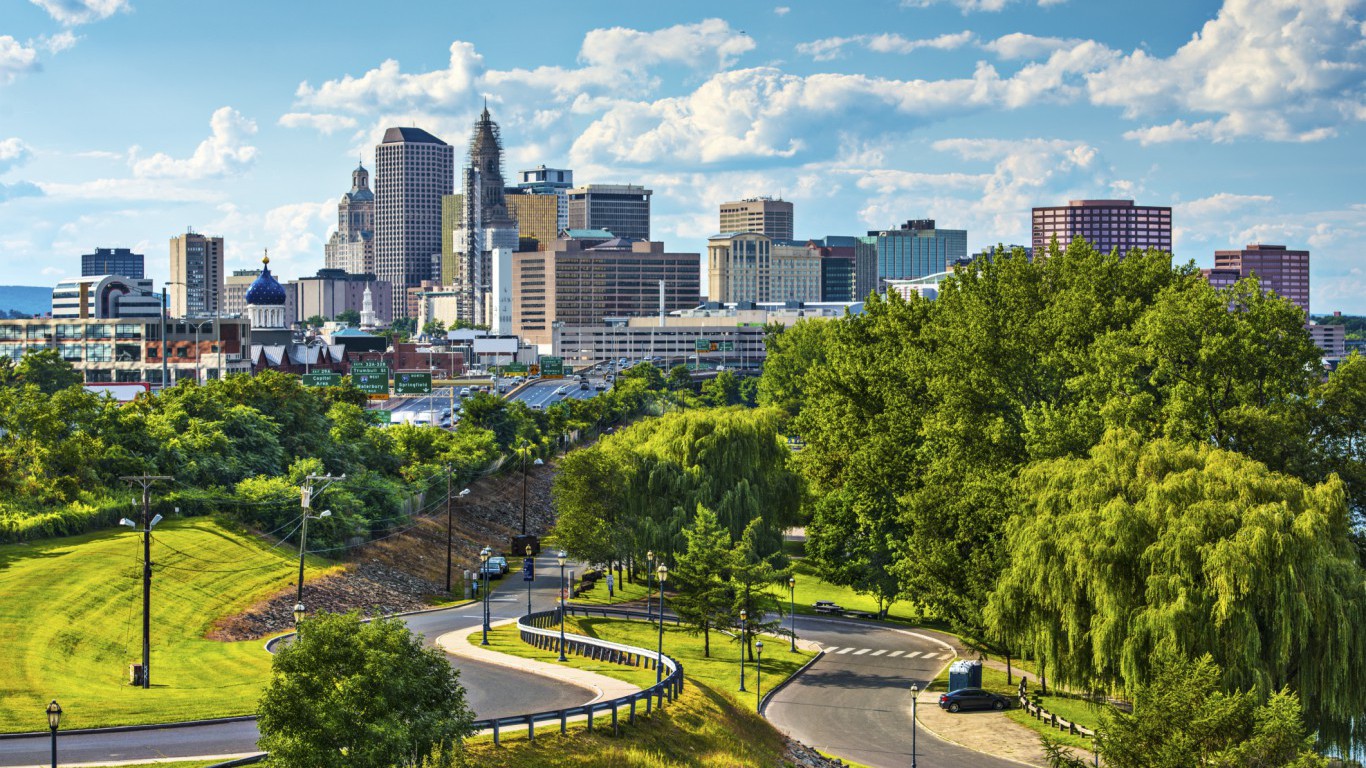
7. Connecticut
> Most stressed city: Hartford-West Hartford-East Hartford
> Total population: 1,214,295
> Poverty rate: 11.1%
> Avg. weekly hours worked: 34.4
> Unemployment rate: 6.6%
> Violent crime rate: 252.2 per 100,000 people
> Pct. of adults in fair/poor health: 10.5%
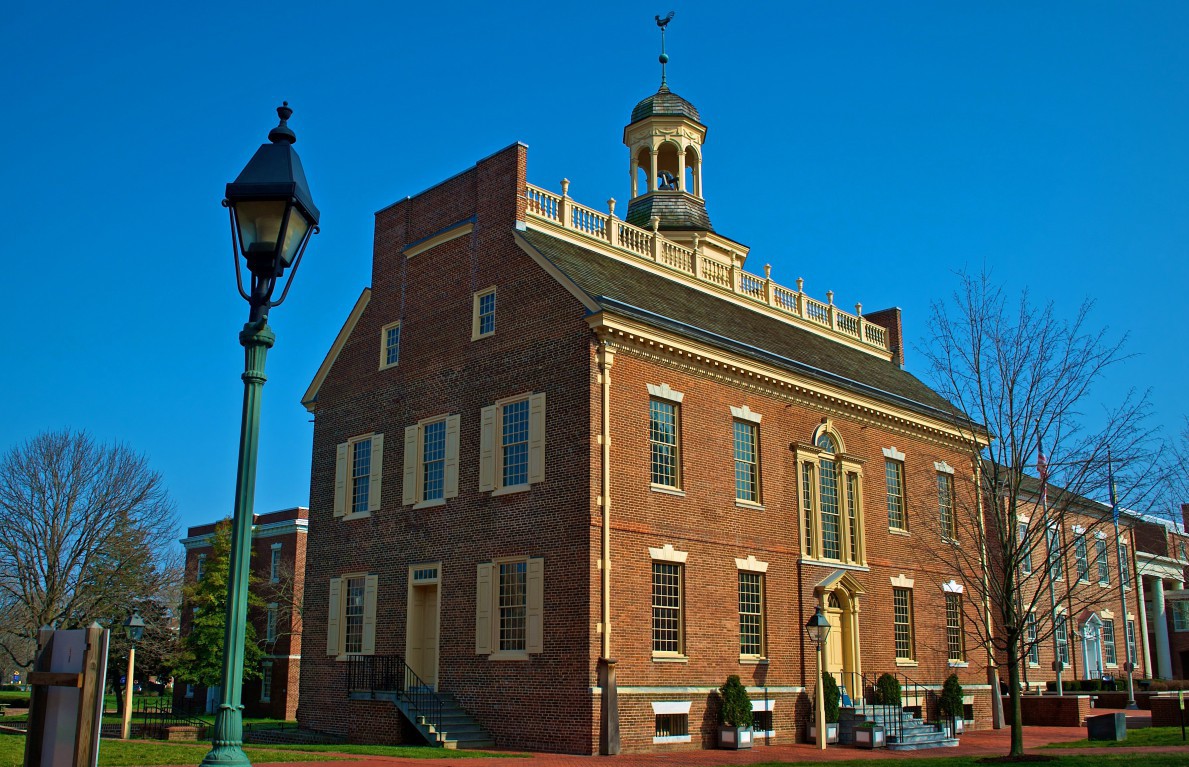
8. Delaware
> Most stressed city: Dover
> Total population: 171,987
> Poverty rate: 13.4%
> Avg. weekly hours worked: 32.9
> Unemployment rate: 6.4%
> Violent crime rate: 422.9 per 100,000 people
> Pct. of adults in fair/poor health: 14.7%
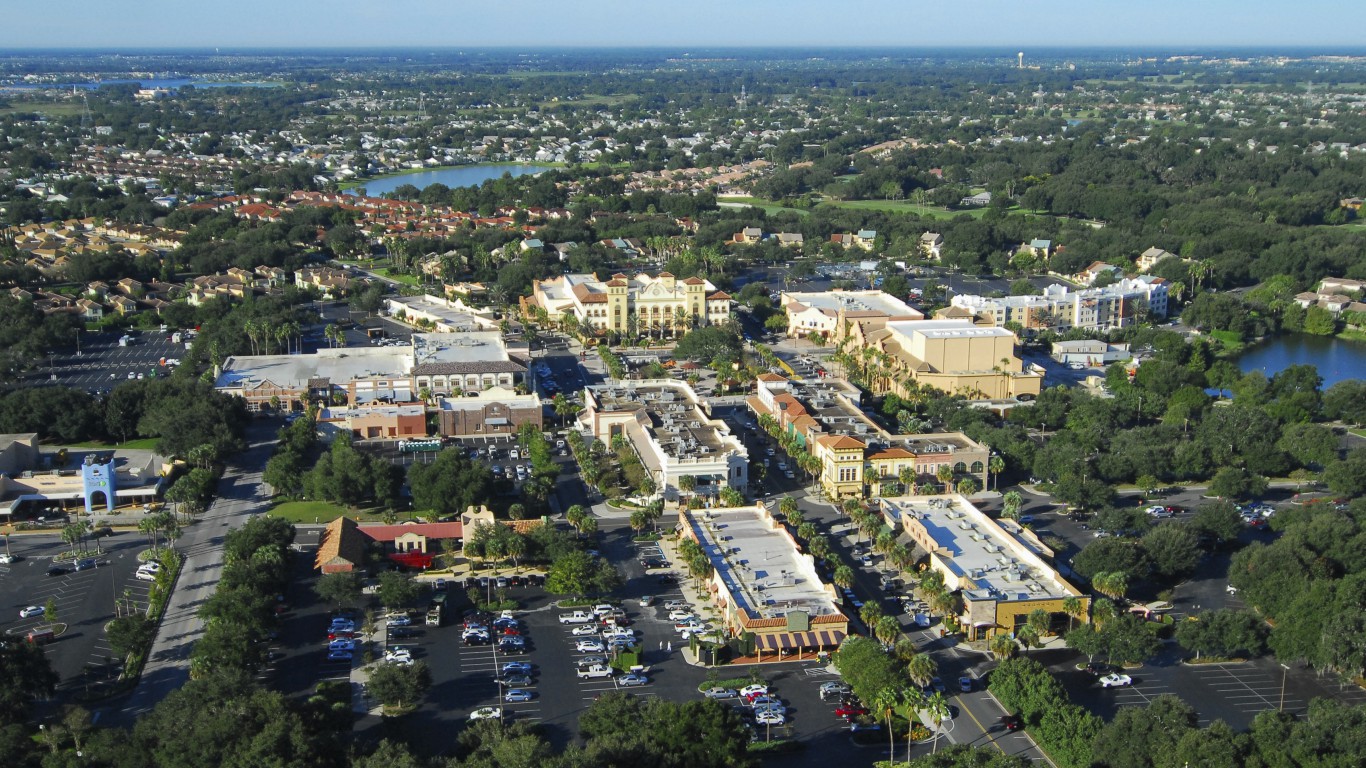
9. Florida
> Most stressed city: The Villages
> Total population: 114,350
> Poverty rate: 9.3%
> Avg. weekly hours worked: 39.3
> Unemployment rate: 7.7%
> Violent crime rate: 189.4 per 100,000 people
> Pct. of adults in fair/poor health: 14.8%

10. Georgia
> Most stressed city: Dalton
> Total population: 142,952
> Poverty rate: 21.6%
> Avg. weekly hours worked: 39.1
> Unemployment rate: 8.3%
> Violent crime rate: 221.5 per 100,000 people
> Pct. of adults in fair/poor health: 25.2%

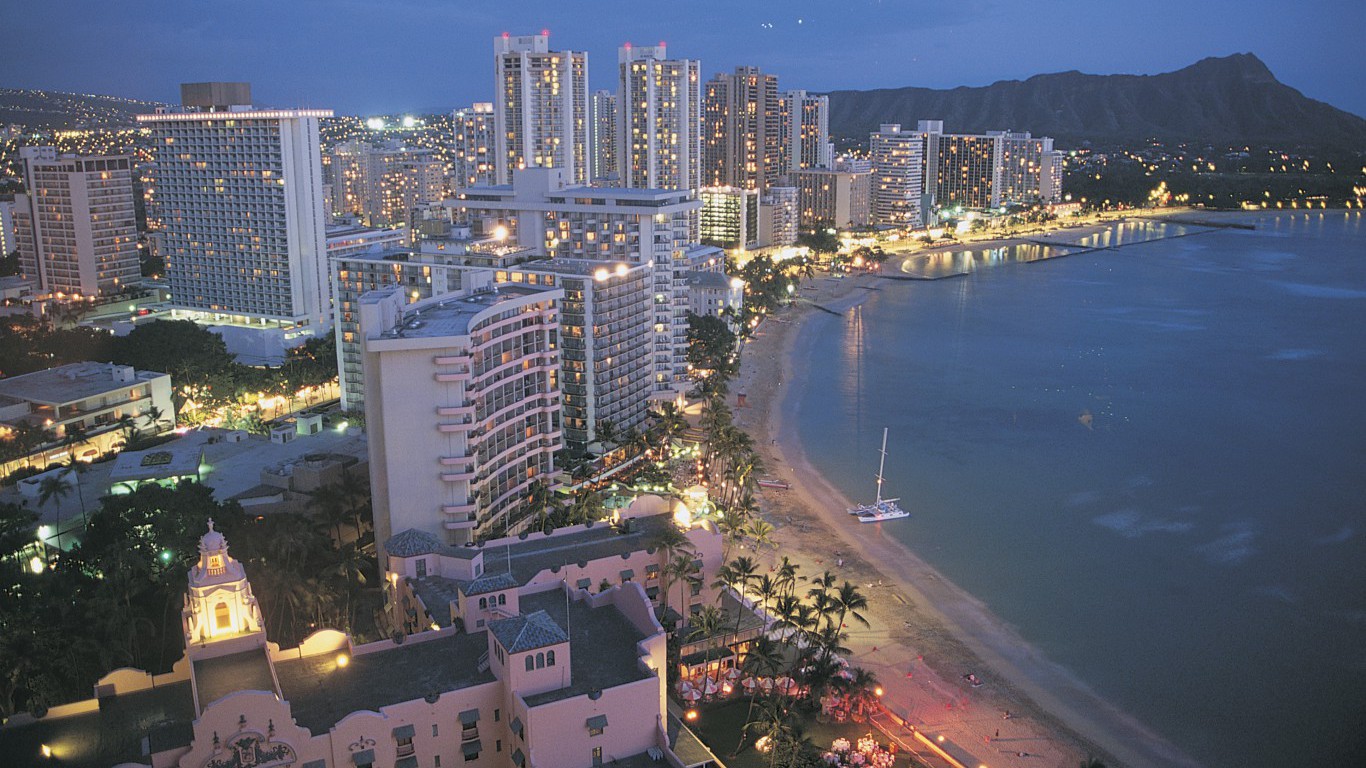
11. Hawaii
> Most stressed city: Urban Honolulu
> Total population: 991,788
> Poverty rate: 9.7%
> Avg. weekly hours worked: 34.1
> Unemployment rate: 4.1%
> Violent crime rate: N/A
> Pct. of adults in fair/poor health: 13.5%

12. Idaho
> Most stressed city: Coeur d’Alene
> Total population: 147,326
> Poverty rate: 12.0%
> Avg. weekly hours worked: 33.6
> Unemployment rate: 5.6%
> Violent crime rate: 276.1 per 100,000 people
> Pct. of adults in fair/poor health: 12.7%

13. Illinois
> Most stressed city: Chicago-Naperville-Elgin
> Total population: 9,553,810
> Poverty rate: 13.9%
> Avg. weekly hours worked: 34.9
> Unemployment rate: 7.0%
> Violent crime rate: 380.1 per 100,000 people
> Pct. of adults in fair/poor health: 15.4%

14. Indiana
> Most stressed city: Columbus
> Total population: 80,217
> Poverty rate: 12.7%
> Avg. weekly hours worked: 39.2
> Unemployment rate: 4.5%
> Violent crime rate: 109.5 per 100,000 people
> Pct. of adults in fair/poor health: 14.8%

15. Iowa
> Most stressed city: Des Moines-West Des Moines
> Total population: 611,549
> Poverty rate: 12.0%
> Avg. weekly hours worked: 35.8
> Unemployment rate: 4.2%
> Violent crime rate: 316.8 per 100,000 people
> Pct. of adults in fair/poor health: 10.8%

16. Kansas
> Most stressed city: Wichita
> Total population: 641,225
> Poverty rate: 13.9%
> Avg. weekly hours worked: 36.3
> Unemployment rate: 5.2%
> Violent crime rate: N/A
> Pct. of adults in fair/poor health: 12.9%
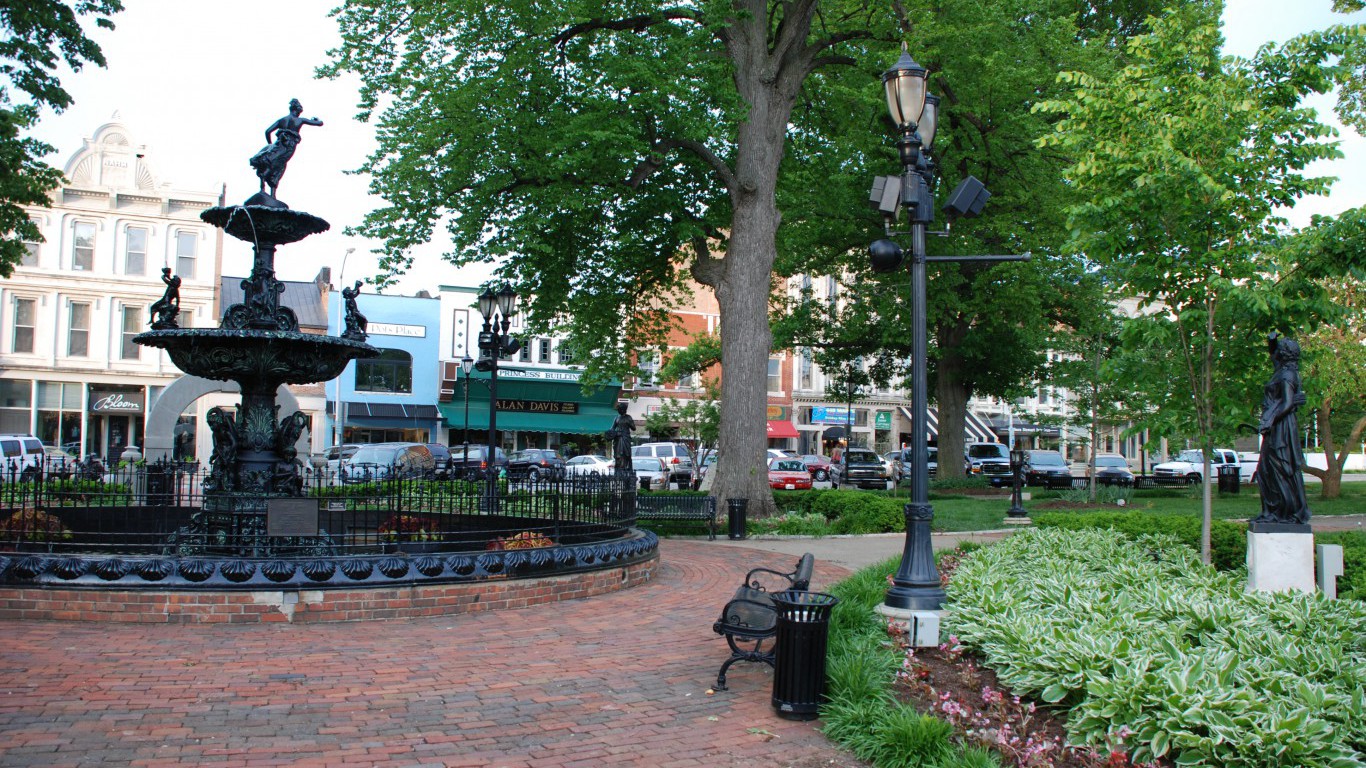
17. Kentucky
> Most stressed city: Bowling Green
> Total population: 165,928
> Poverty rate: 18.6%
> Avg. weekly hours worked: 35.9
> Unemployment rate: 5.9%
> Violent crime rate: 157.1 per 100,000 people
> Pct. of adults in fair/poor health: 19.7%
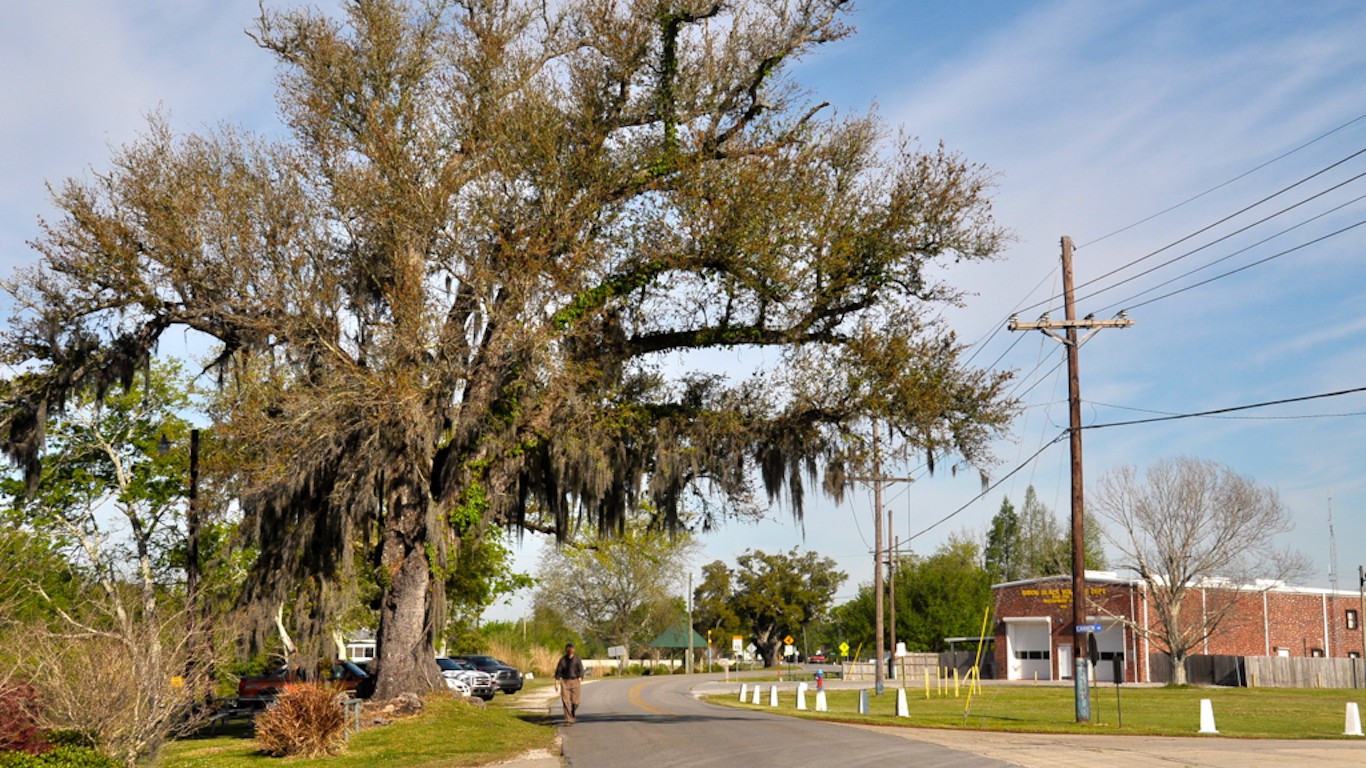
18. Louisiana
> Most stressed city: Houma-Thibodaux
> Total population: 211,348
> Poverty rate: 20.9%
> Avg. weekly hours worked: 43.2
> Unemployment rate: 4.8%
> Violent crime rate: 242.3 per 100,000 people
> Pct. of adults in fair/poor health: 21.4%

19. Maine
> Most stressed city: Lewiston-Auburn
> Total population: 107,440
> Poverty rate: 15.6%
> Avg. weekly hours worked: 35.2
> Unemployment rate: 5.5%
> Violent crime rate: 142.0 per 100,000 people
> Pct. of adults in fair/poor health: 13.4%

20. Maryland
> Most stressed city: California-Lexington Park
> Total population: 110,382
> Poverty rate: 7.5%
> Avg. weekly hours worked: 34.5
> Unemployment rate: 5.4%
> Violent crime rate: 237.3 per 100,000 people
> Pct. of adults in fair/poor health: 12.2%

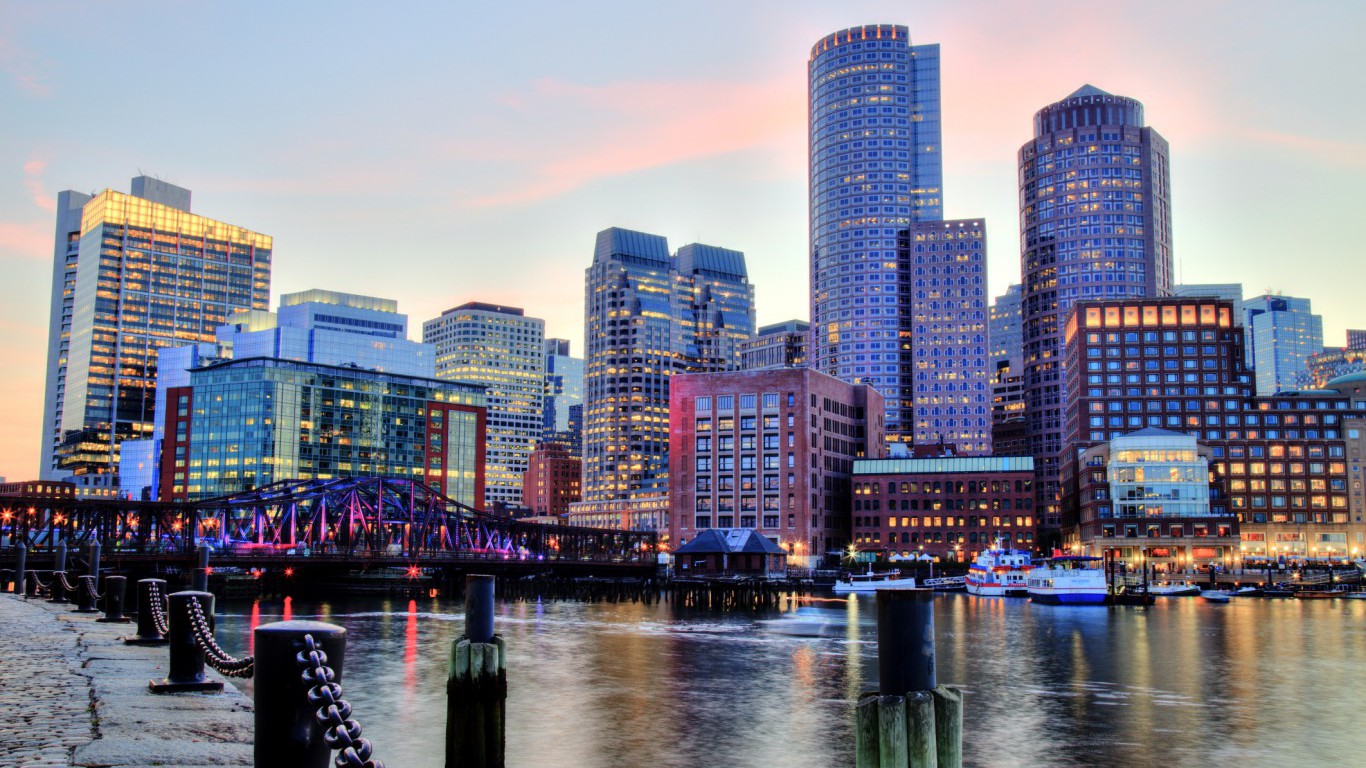
21. Massachusetts
> Most stressed city: Boston-Cambridge-Newton
> Total population: 4,732,161
> Poverty rate: 10.6%
> Avg. weekly hours worked: 34.3
> Unemployment rate: 5.2%
> Violent crime rate: N/A
> Pct. of adults in fair/poor health: 11.7%

22. Michigan
> Most stressed city: Monroe
> Total population: 149,824
> Poverty rate: 9.7%
> Avg. weekly hours worked: 34.6
> Unemployment rate: 6.1%
> Violent crime rate: N/A
> Pct. of adults in fair/poor health: 15.0%
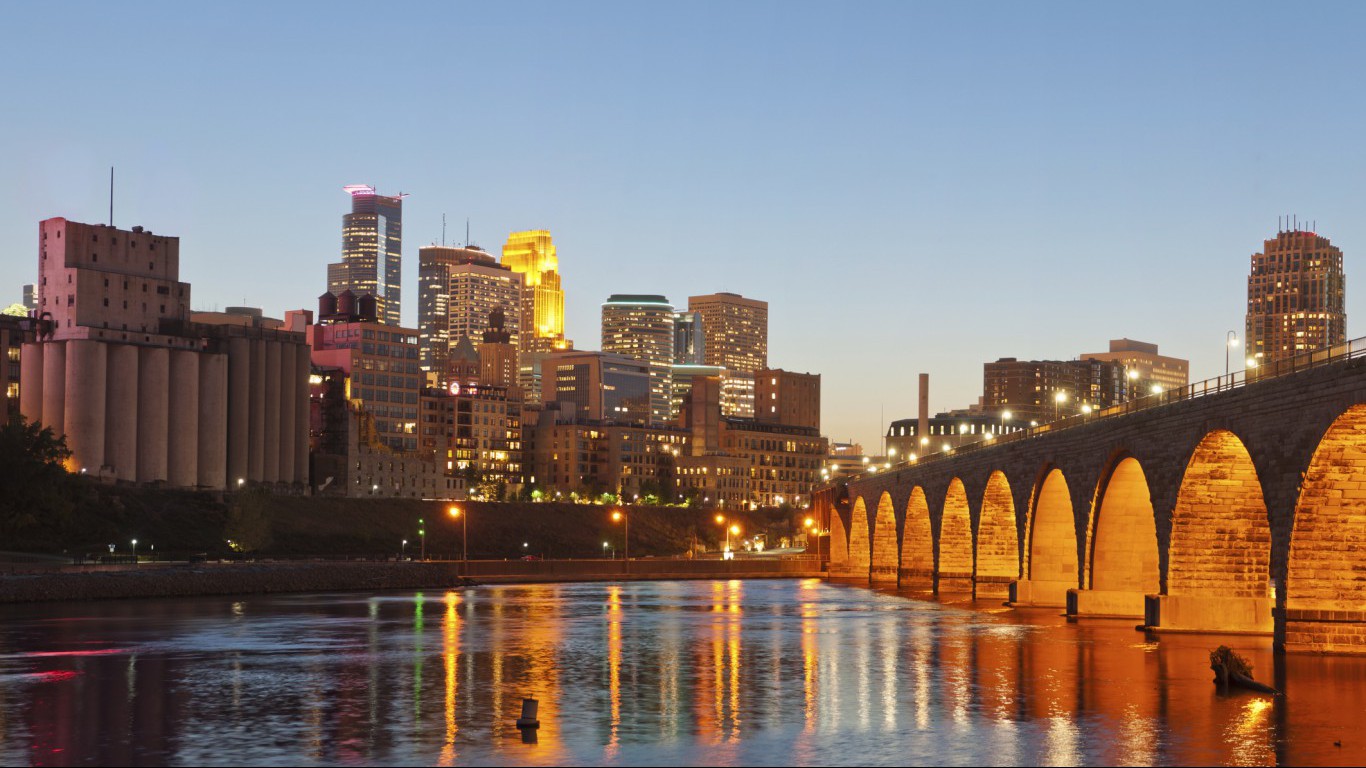
23. Minnesota
> Most stressed city: Minneapolis-St. Paul-Bloomington
> Total population: 3,495,176
> Poverty rate: 10.3%
> Avg. weekly hours worked: 34.4
> Unemployment rate: 3.9%
> Violent crime rate: 261.8 per 100,000 people
> Pct. of adults in fair/poor health: 9.9%

24. Mississippi
> Most stressed city: Hattiesburg
> Total population: 149,312
> Poverty rate: 20.6%
> Avg. weekly hours worked: 35.6
> Unemployment rate: 6.6%
> Violent crime rate: N/A
> Pct. of adults in fair/poor health: 19.9%

25. Missouri
> Most stressed city: Joplin
> Total population: 176,141
> Poverty rate: 17.5%
> Avg. weekly hours worked: 36.9
> Unemployment rate: 5.3%
> Violent crime rate: 328.6 per 100,000 people
> Pct. of adults in fair/poor health: 16.1%
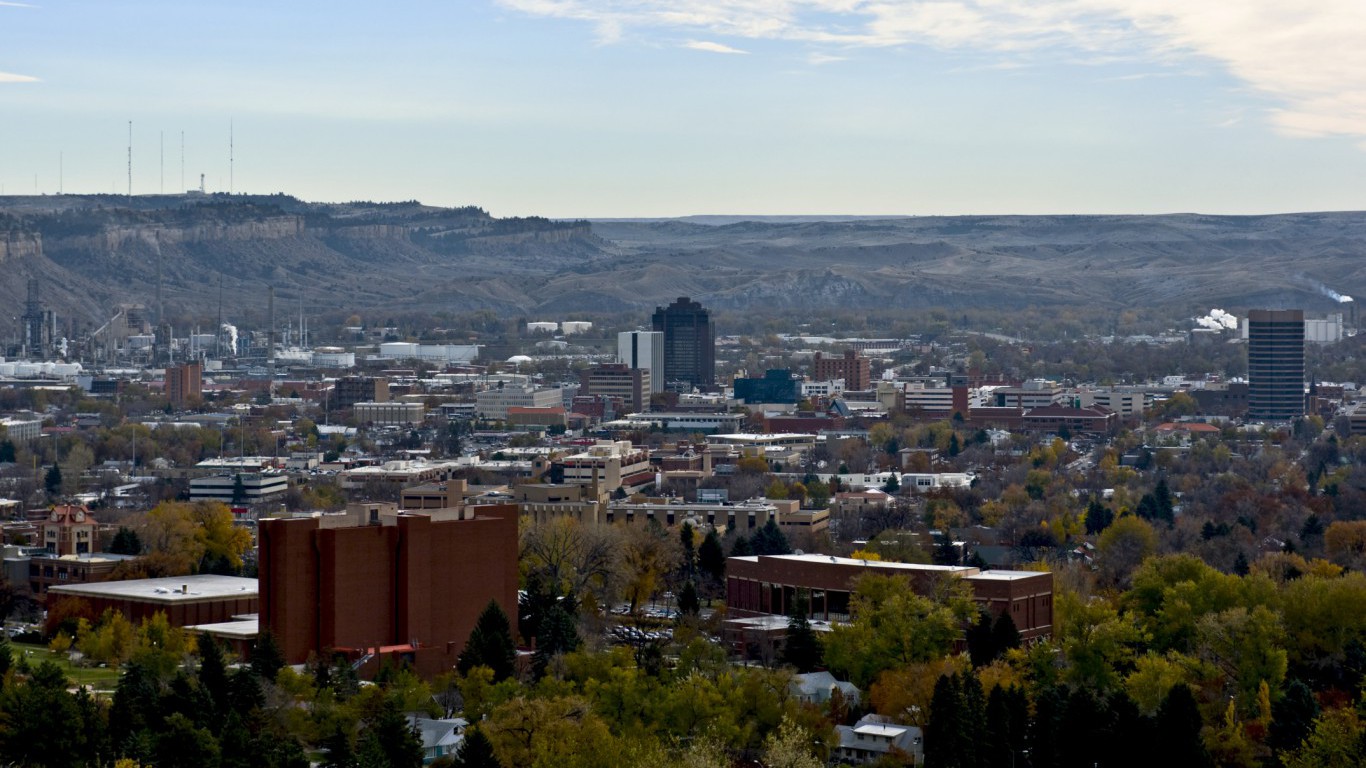
26. Montana
> Most stressed city: Billings
> Total population: 167,521
> Poverty rate: 12.2%
> Avg. weekly hours worked: 33.3
> Unemployment rate: 3.8%
> Violent crime rate: 323.5 per 100,000 people
> Pct. of adults in fair/poor health: 13.2%
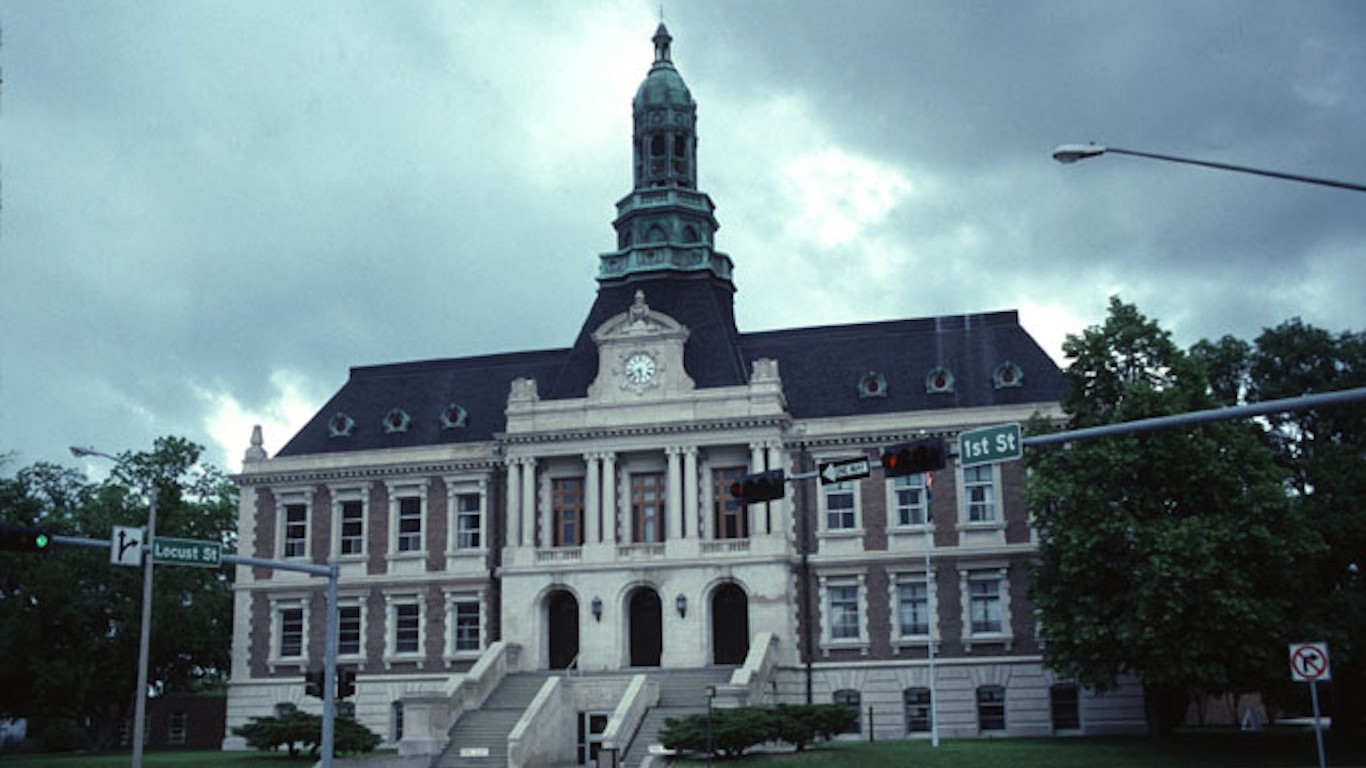
27. Nebraska
> Most stressed city: Grand Island
> Total population: 84,467
> Poverty rate: 14.8%
> Avg. weekly hours worked: 34.3
> Unemployment rate: 3.7%
> Violent crime rate: 202.1 per 100,000 people
> Pct. of adults in fair/poor health: 13.0%
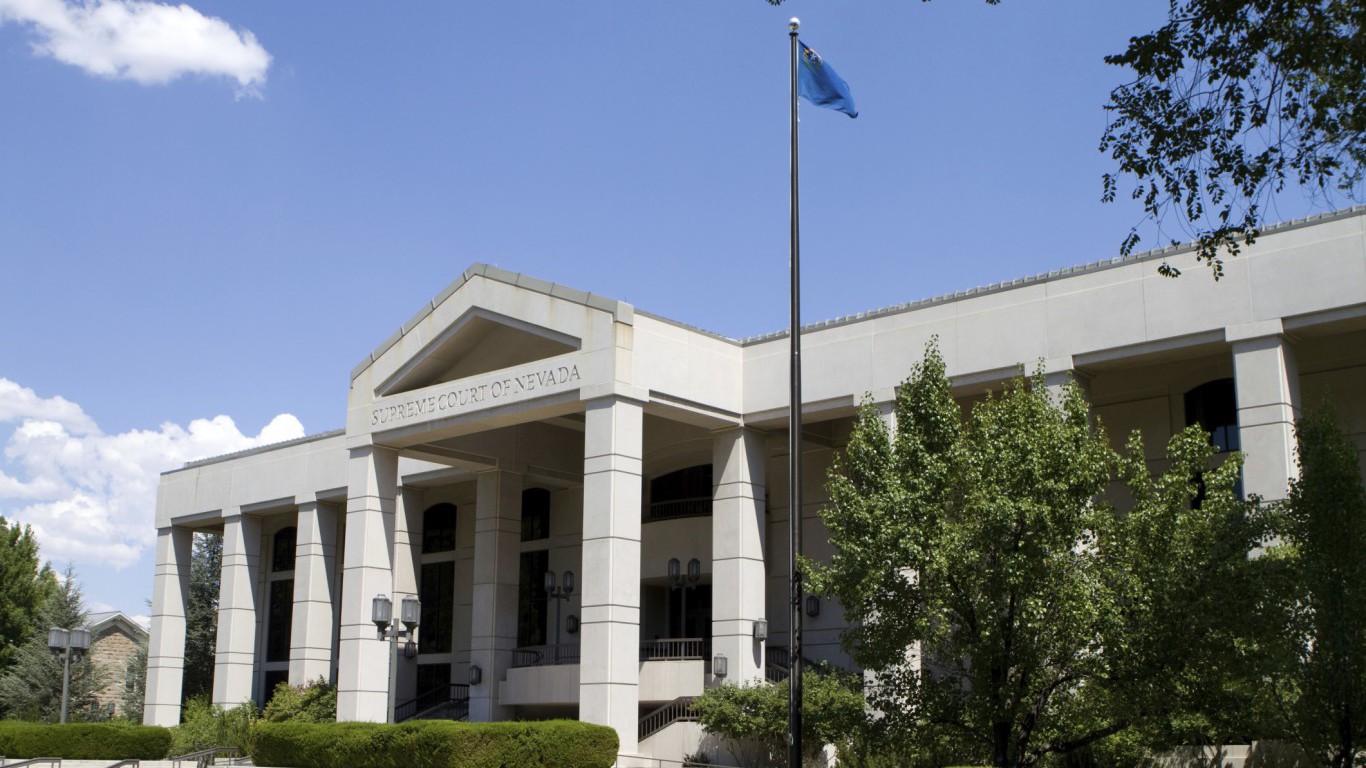
28. Nevada
> Most stressed city: Carson City
> Total population: 54,522
> Poverty rate: 22.4%
> Avg. weekly hours worked: 34.3
> Unemployment rate: 8.5%
> Violent crime rate: 294.7 per 100,000 people
> Pct. of adults in fair/poor health: 17.7%

29. New Hampshire
> Most stressed city: Manchester-Nashua
> Total population: 405,184
> Poverty rate: 8.7%
> Avg. weekly hours worked: 34.8
> Unemployment rate: 4.2%
> Violent crime rate: 267.0 per 100,000 people
> Pct. of adults in fair/poor health: 11.1%

30. New Jersey
> Most stressed city: Vineland-Bridgeton
> Total population: 157,389
> Poverty rate: 19.8%
> Avg. weekly hours worked: 34.9
> Unemployment rate: 9.9%
> Violent crime rate: 511.4 per 100,000 people
> Pct. of adults in fair/poor health: 24.6%

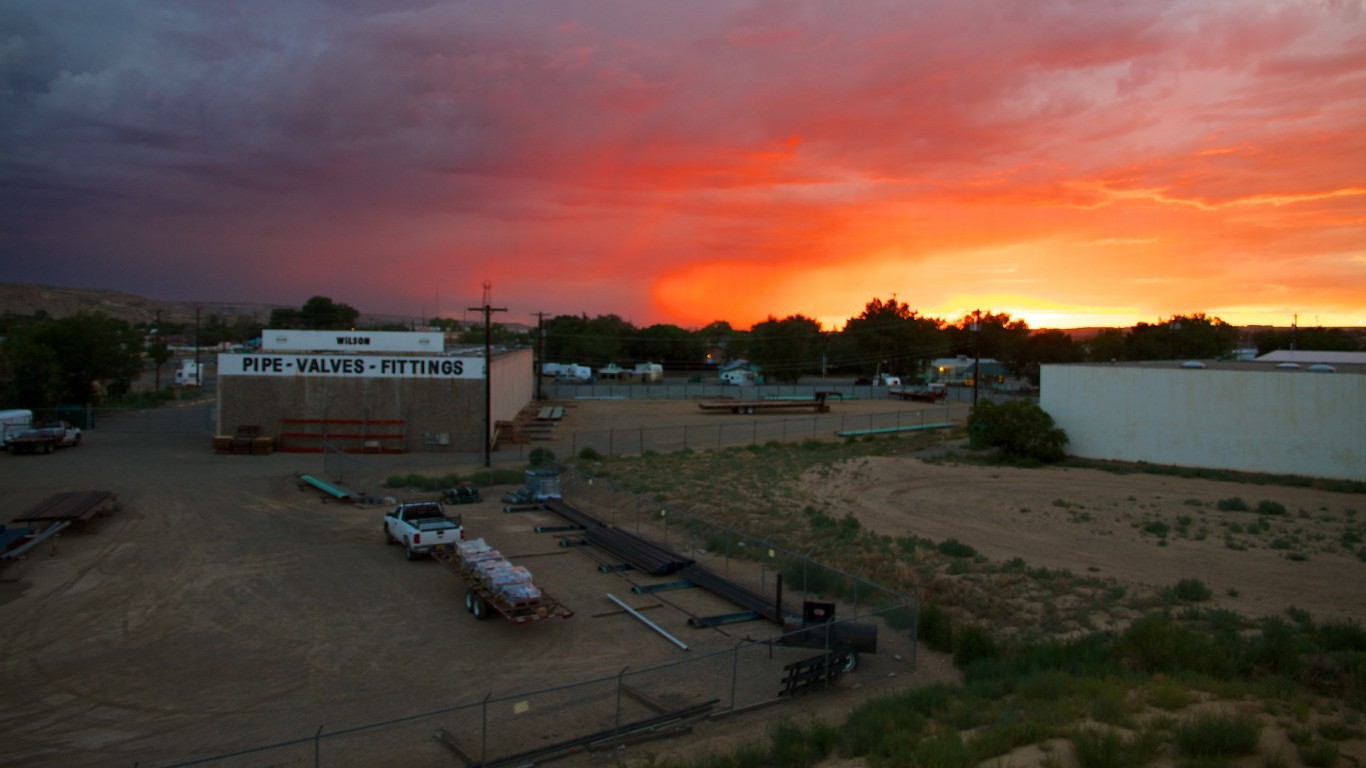
31. New Mexico
> Most stressed city: Farmington
> Total population: 123,785
> Poverty rate: 22.0%
> Avg. weekly hours worked: 36.5
> Unemployment rate: 6.3%
> Violent crime rate: 534.7 per 100,000 people
> Pct. of adults in fair/poor health: 16.7%

32. New York
> Most stressed city: Syracuse
> Total population: 661,478
> Poverty rate: 16.5%
> Avg. weekly hours worked: 33.9
> Unemployment rate: 6.1%
> Violent crime rate: 279.3 per 100,000 people
> Pct. of adults in fair/poor health: 14.0%

33. North Carolina
> Most stressed city: Hickory-Lenoir-Morganton
> Total population: 362,896
> Poverty rate: 18.9%
> Avg. weekly hours worked: 37.1
> Unemployment rate: 6.4%
> Violent crime rate: 193.7 per 100,000 people
> Pct. of adults in fair/poor health: 19.8%
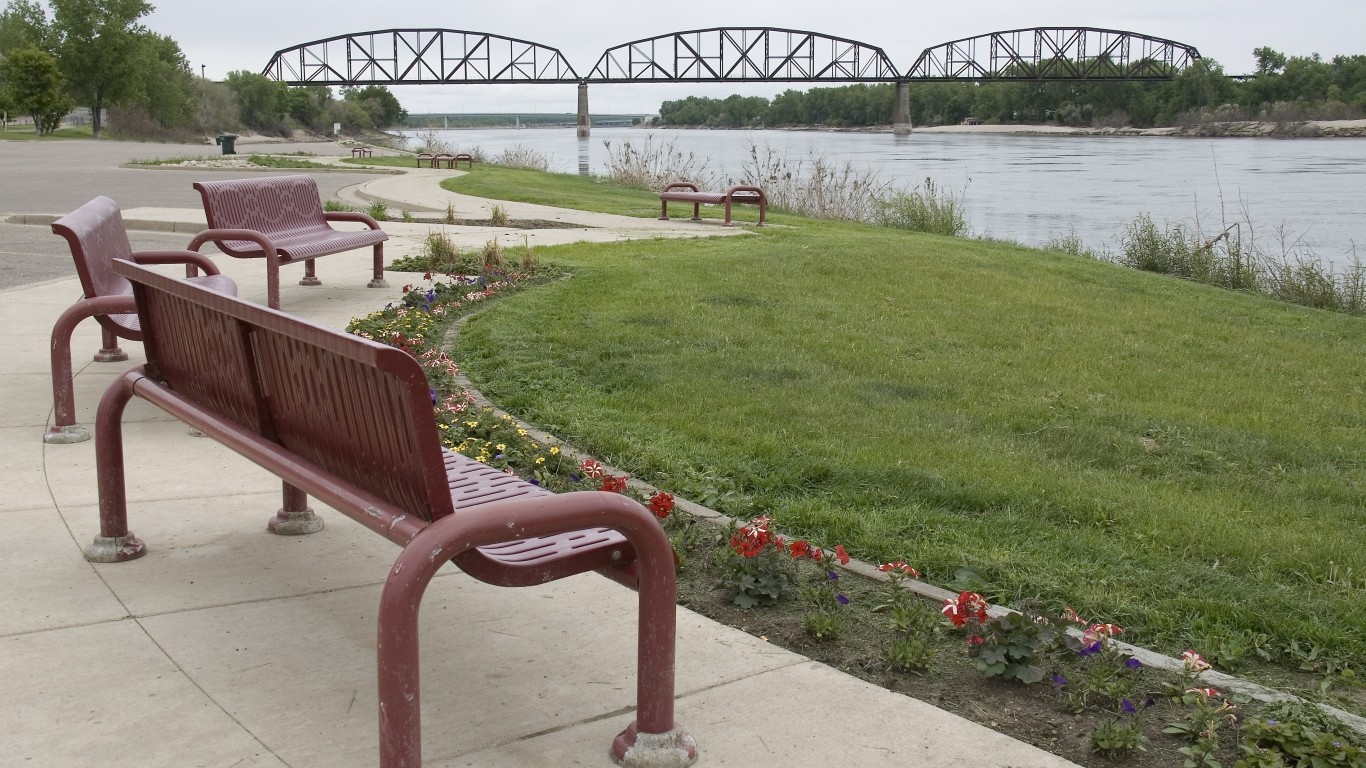
34. North Dakota
> Most stressed city: Bismarck
> Total population: 126,526
> Poverty rate: 9.8%
> Avg. weekly hours worked: 34.4
> Unemployment rate: 2.8%
> Violent crime rate: 338.5 per 100,000 people
> Pct. of adults in fair/poor health: 10.7%

35. Ohio
> Most stressed city: Mansfield
> Total population: 121,942
> Poverty rate: 15.1%
> Avg. weekly hours worked: 34.8
> Unemployment rate: 6.4%
> Violent crime rate: 211.8 per 100,000 people
> Pct. of adults in fair/poor health: 13.9%
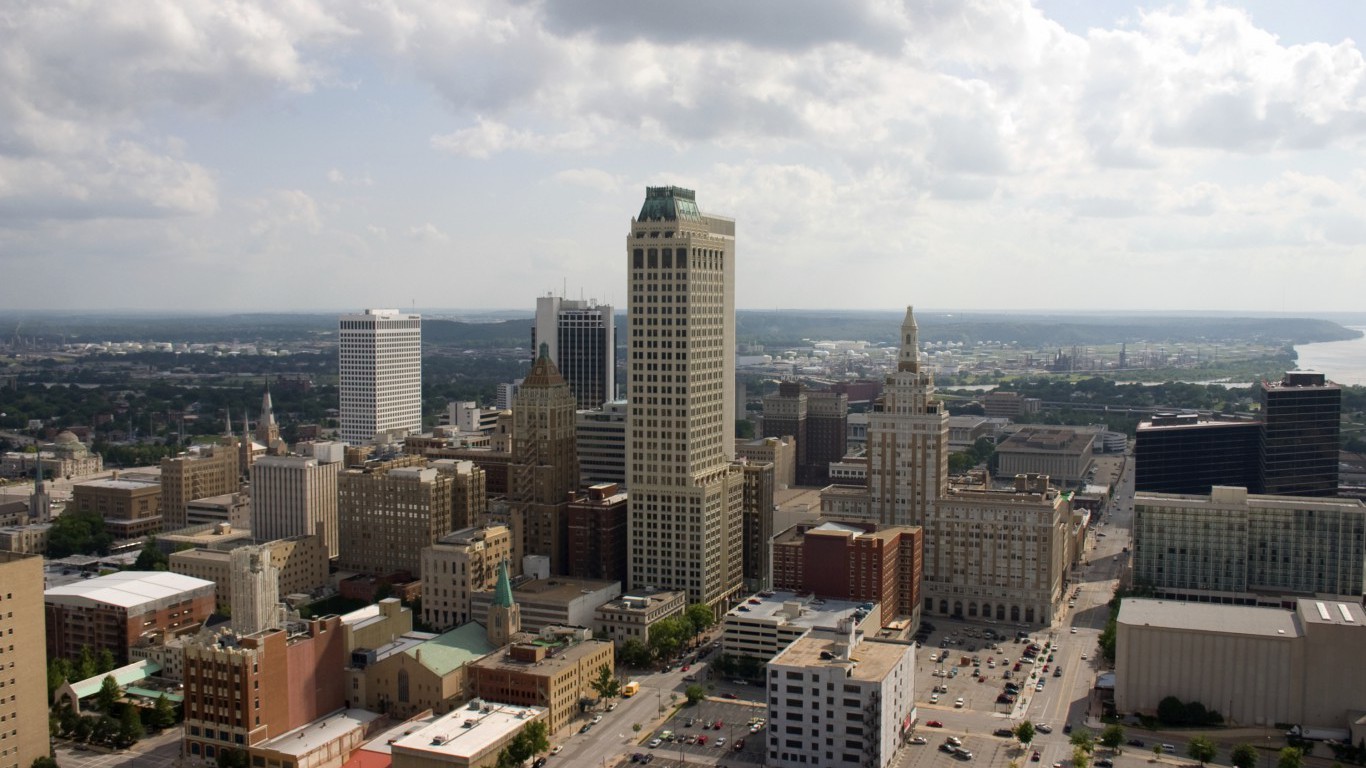
36. Oklahoma
> Most stressed city: Tulsa
> Total population: 970,391
> Poverty rate: 14.4%
> Avg. weekly hours worked: 36.3
> Unemployment rate: 4.5%
> Violent crime rate: 461.0 per 100,000 people
> Pct. of adults in fair/poor health: 17.3%

37. Oregon
> Most stressed city: Medford
> Total population: 210,287
> Poverty rate: 18.1%
> Avg. weekly hours worked: 34.8
> Unemployment rate: 8.6%
> Violent crime rate: 315.1 per 100,000 people
> Pct. of adults in fair/poor health: 15.1%

38. Pennsylvania
> Most stressed city: Reading
> Total population: 413,691
> Poverty rate: 14.7%
> Avg. weekly hours worked: 35.3
> Unemployment rate: 5.5%
> Violent crime rate: 327.6 per 100,000 people
> Pct. of adults in fair/poor health: 12.4%

39. Rhode Island
> Most stressed city: Providence-Warwick
> Total population: 1,609,367
> Poverty rate: 13.6%
> Avg. weekly hours worked: 33.3
> Unemployment rate: 7.5%
> Violent crime rate: 328.9 per 100,000 people
> Pct. of adults in fair/poor health: 14.1%

40. South Carolina
> Most stressed city: Spartanburg
> Total population: 321,418
> Poverty rate: 17.8%
> Avg. weekly hours worked: 36.6
> Unemployment rate: 6.5%
> Violent crime rate: 394.3 per 100,000 people
> Pct. of adults in fair/poor health: 17.8%

41. South Dakota
> Most stressed city: Sioux Falls
> Total population: 248,252
> Poverty rate: 9.7%
> Avg. weekly hours worked: 34.6
> Unemployment rate: 2.8%
> Violent crime rate: 327.6 per 100,000 people
> Pct. of adults in fair/poor health: 9.3%
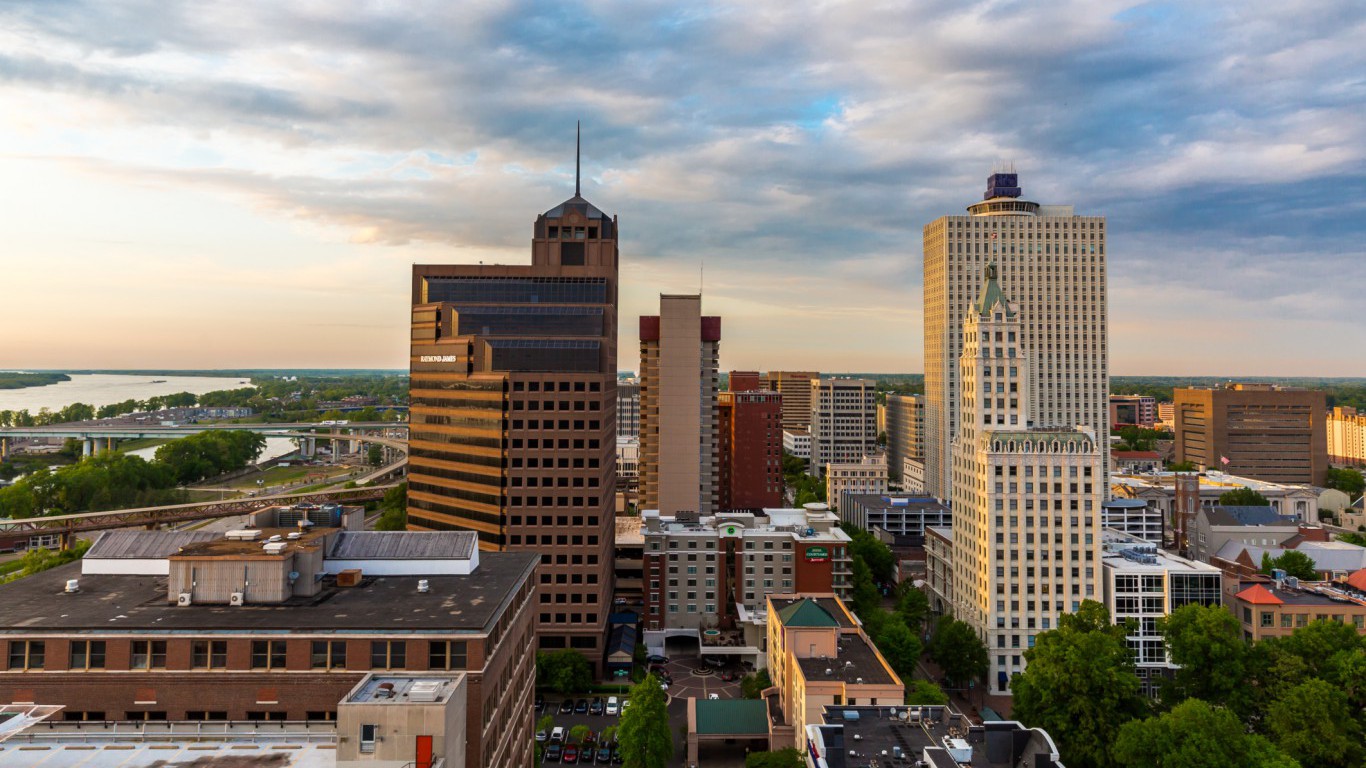
42. Tennessee
> Most stressed city: Memphis
> Total population: 1,344,121
> Poverty rate: 20.3%
> Avg. weekly hours worked: 35.4
> Unemployment rate: 7.6%
> Violent crime rate: 1033.5 per 100,000 people
> Pct. of adults in fair/poor health: 18.0%
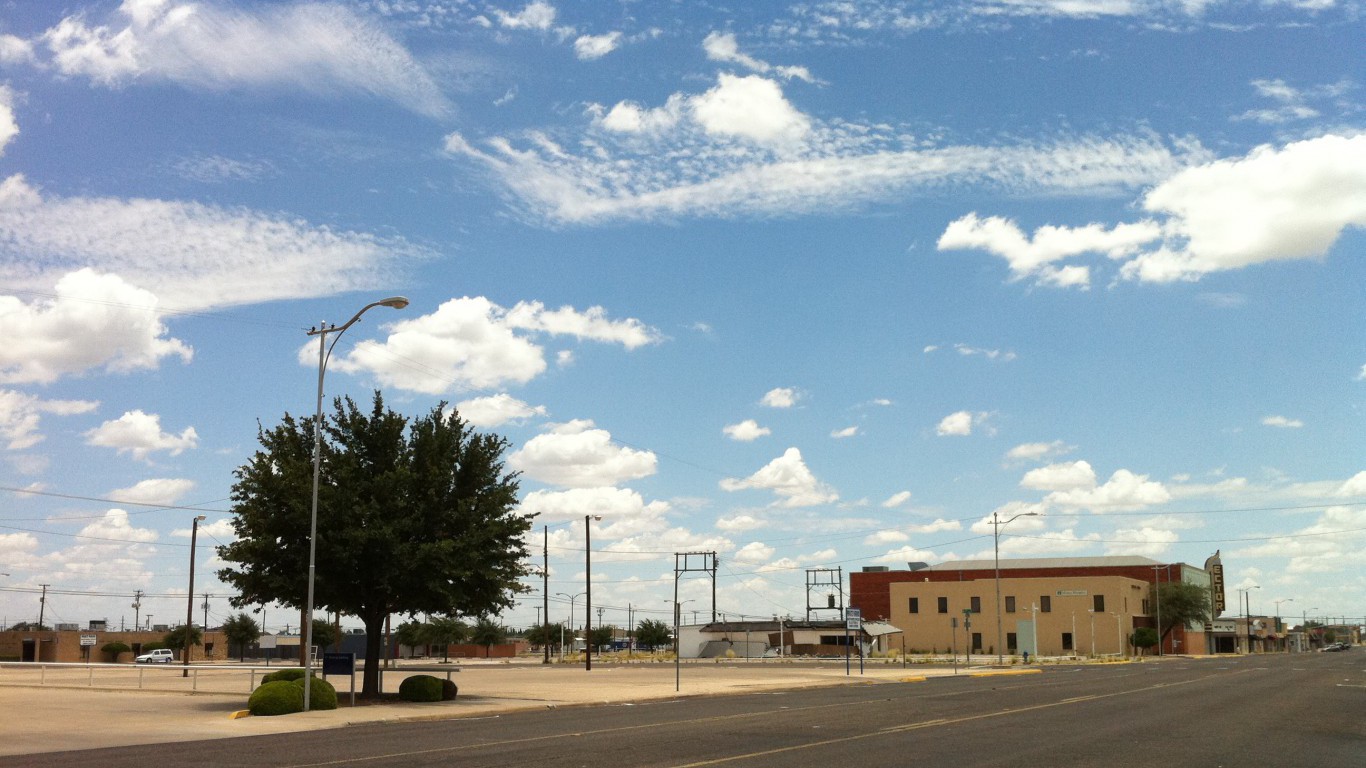
43. Texas
> Most stressed city: Odessa
> Total population: 153,904
> Poverty rate: 10.0%
> Avg. weekly hours worked: 42.9
> Unemployment rate: 3.4%
> Violent crime rate: N/A
> Pct. of adults in fair/poor health: 20.7%
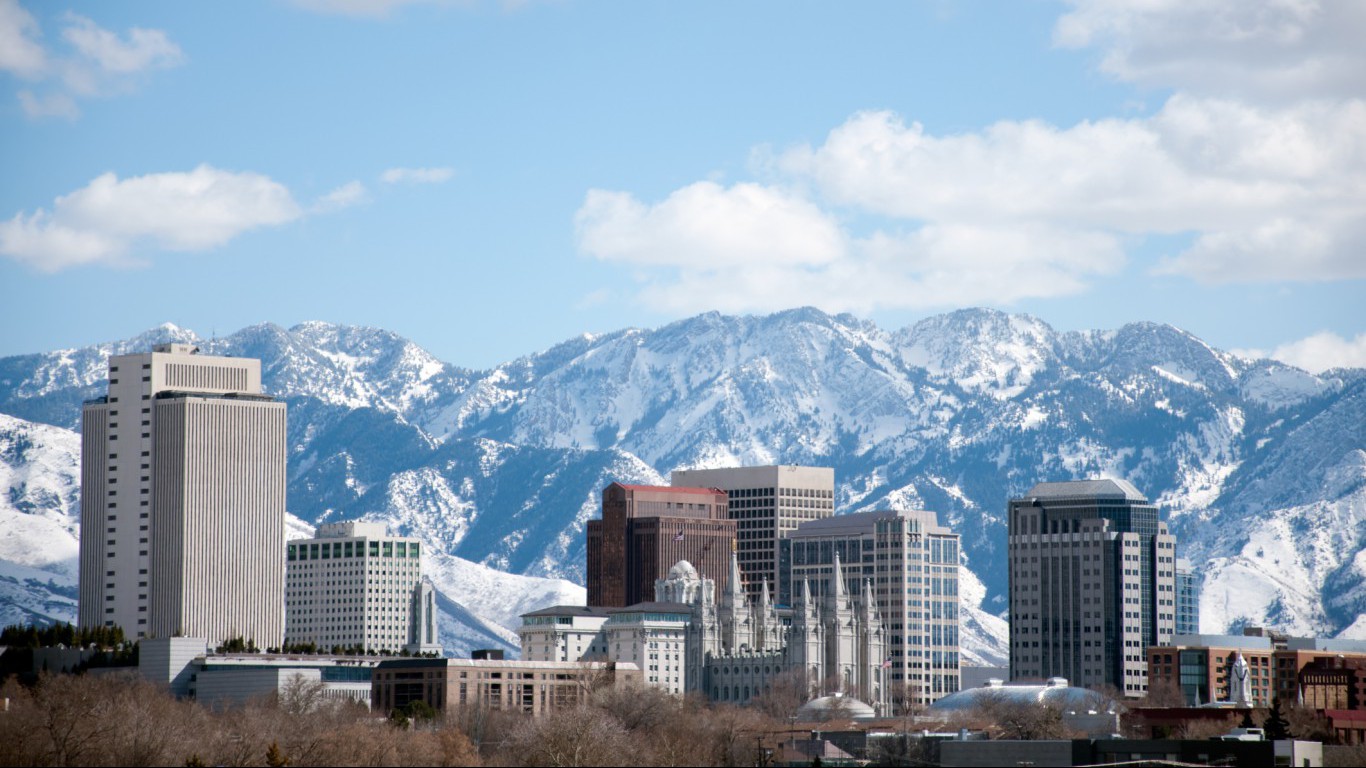
44. Utah
> Most stressed city: Salt Lake City
> Total population: 1,153,340
> Poverty rate: 11.4%
> Avg. weekly hours worked: 36.5
> Unemployment rate: 3.7%
> Violent crime rate: 348.0 per 100,000 people
> Pct. of adults in fair/poor health: 12.6%

45. Vermont
> Most stressed city: Burlington-South Burlington
> Total population: 215,824
> Poverty rate: 10.4%
> Avg. weekly hours worked: 34.4
> Unemployment rate: 3.3%
> Violent crime rate: N/A
> Pct. of adults in fair/poor health: 9.1%
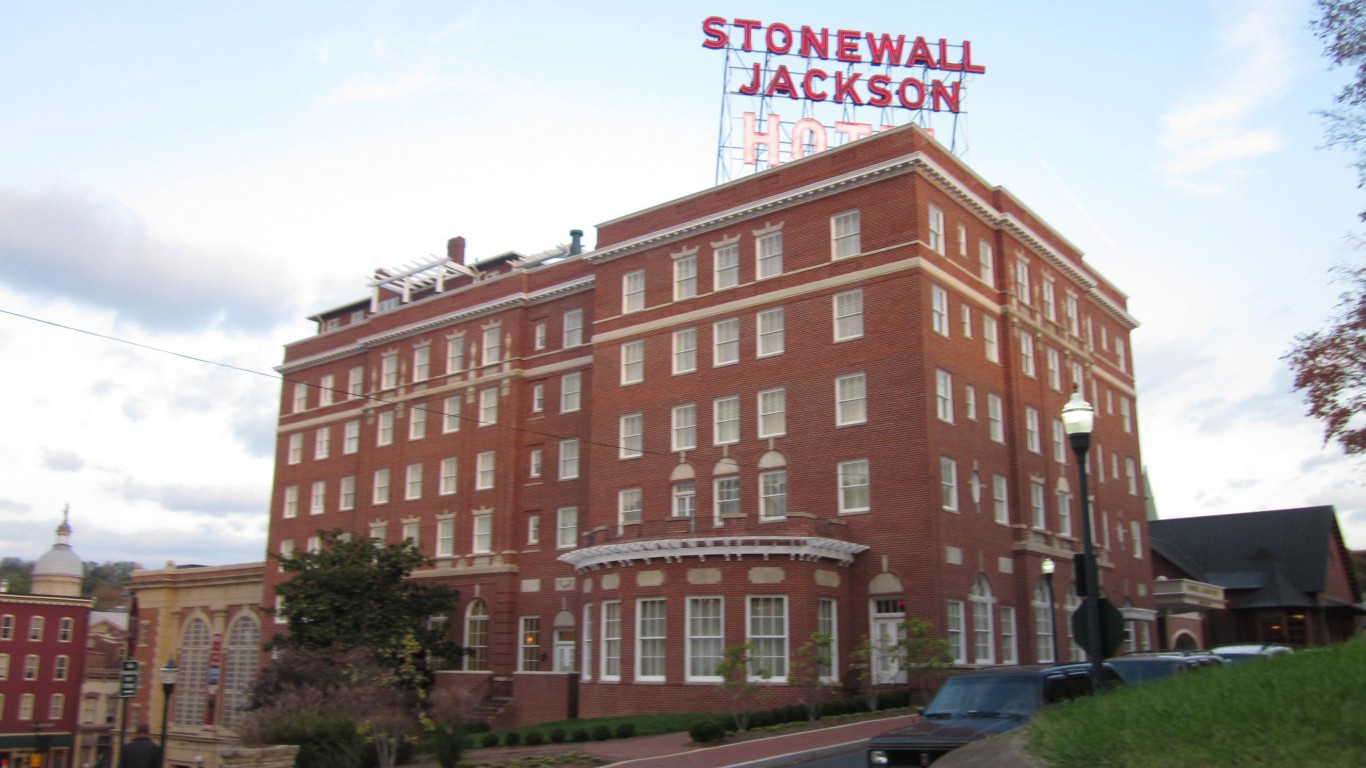
46. Virginia
> Most stressed city: Staunton-Waynesboro
> Total population: 119,766
> Poverty rate: 11.7%
> Avg. weekly hours worked: 36.8
> Unemployment rate: 4.9%
> Violent crime rate: 147.6 per 100,000 people
> Pct. of adults in fair/poor health: 11.2%
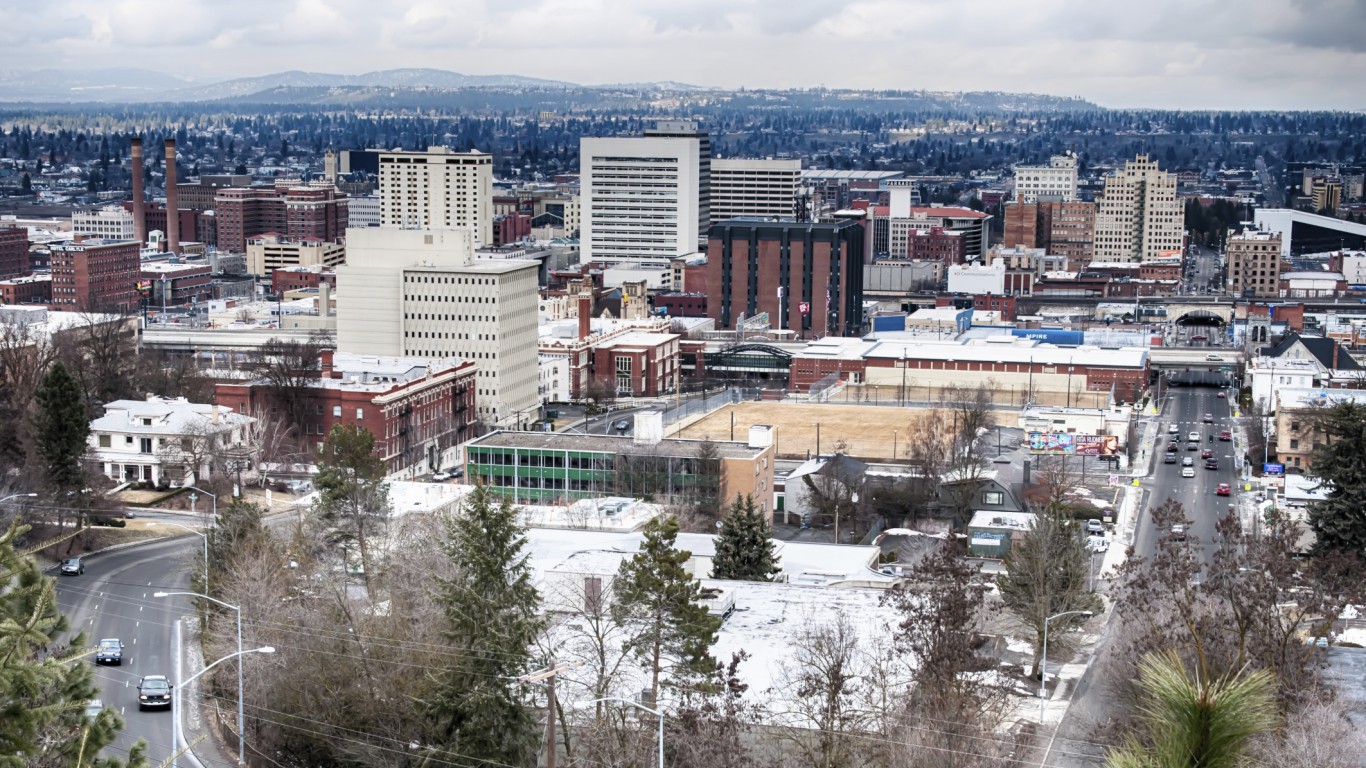
47. Washington
> Most stressed city: Spokane-Spokane Valley
> Total population: 542,073
> Poverty rate: 16.9%
> Avg. weekly hours worked: 34.0
> Unemployment rate: 7.4%
> Violent crime rate: 318.6 per 100,000 people
> Pct. of adults in fair/poor health: 14.3%

48. West Virginia
> Most stressed city: Morgantown
> Total population: 137,251
> Poverty rate: 23.5%
> Avg. weekly hours worked: 37.4
> Unemployment rate: 4.7%
> Violent crime rate: 201.7 per 100,000 people
> Pct. of adults in fair/poor health: 17.2%
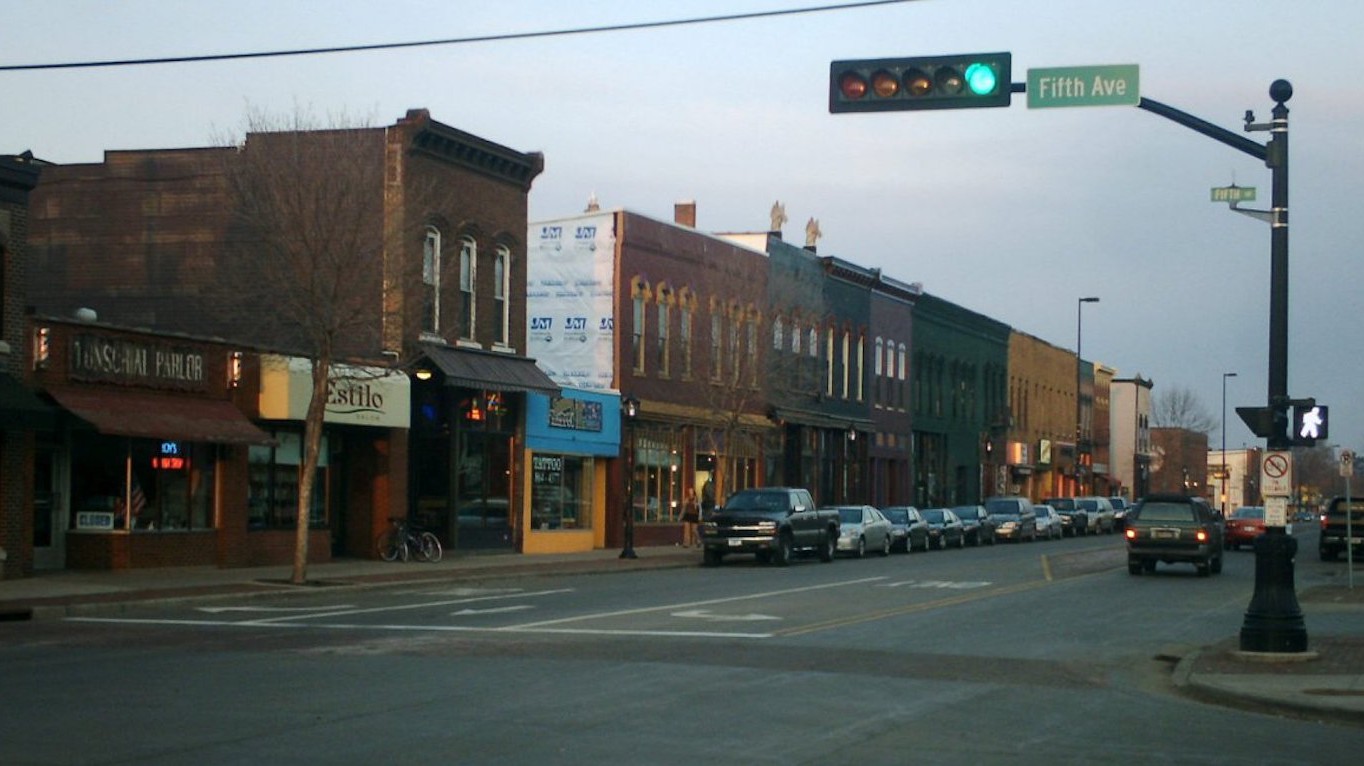
49. Wisconsin
> Most stressed city: Eau Claire
> Total population: 165,024
> Poverty rate: 12.6%
> Avg. weekly hours worked: 33.9
> Unemployment rate: 4.9%
> Violent crime rate: 131.2 per 100,000 people
> Pct. of adults in fair/poor health: 10.9%
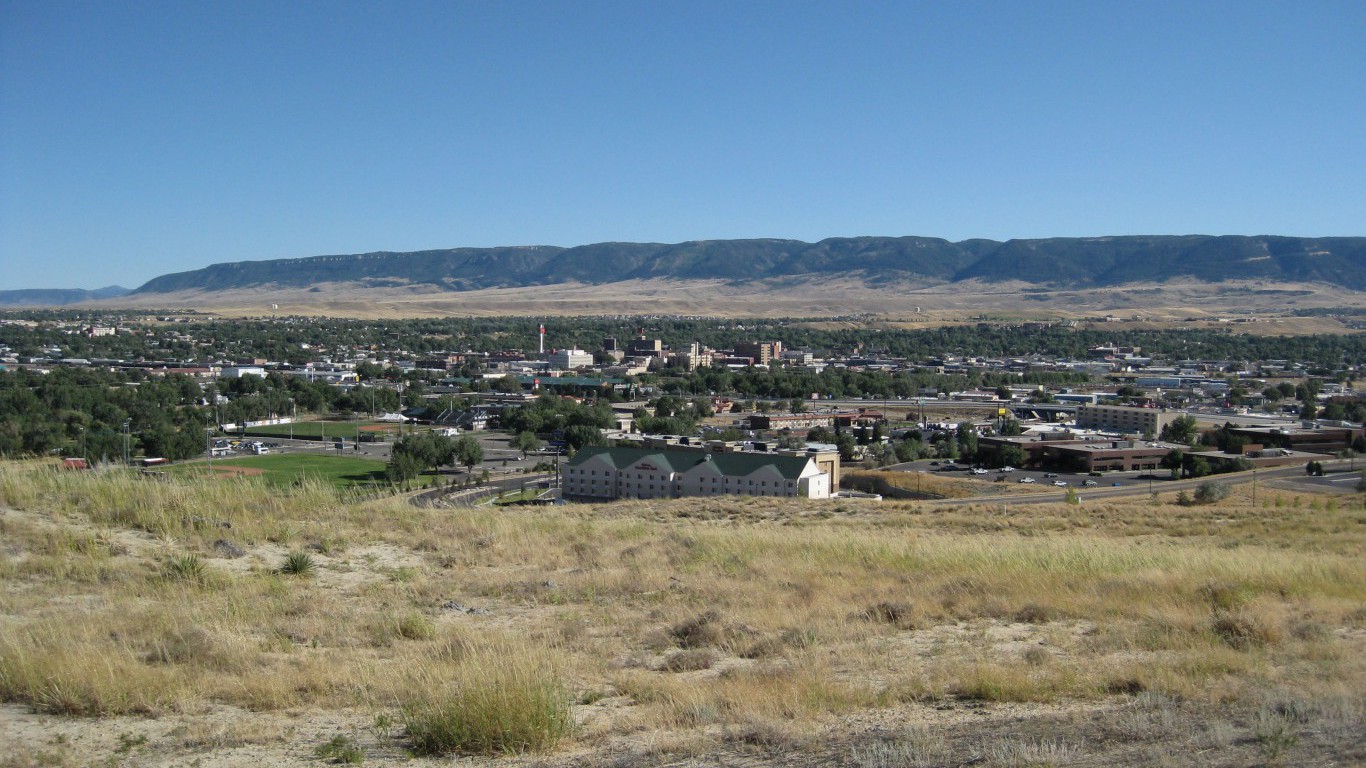
50. Wyoming
> Most stressed city: Casper
> Total population: 81,624
> Poverty rate: 9.3%
> Avg. weekly hours worked: 37.5
> Unemployment rate: 4.2%
> Violent crime rate: 184.2 per 100,000 people
> Pct. of adults in fair/poor health: 14.3%
Start by taking a quick retirement quiz from SmartAsset that will match you with up to 3 financial advisors that serve your area and beyond in 5 minutes, or less.
Each advisor has been vetted by SmartAsset and is held to a fiduciary standard to act in your best interests.
Here’s how it works:
1. Answer SmartAsset advisor match quiz
2. Review your pre-screened matches at your leisure. Check out the advisors’ profiles.
3. Speak with advisors at no cost to you. Have an introductory call on the phone or introduction in person and choose whom to work with in the future
Get started right here.
Thank you for reading! Have some feedback for us?
Contact the 24/7 Wall St. editorial team.